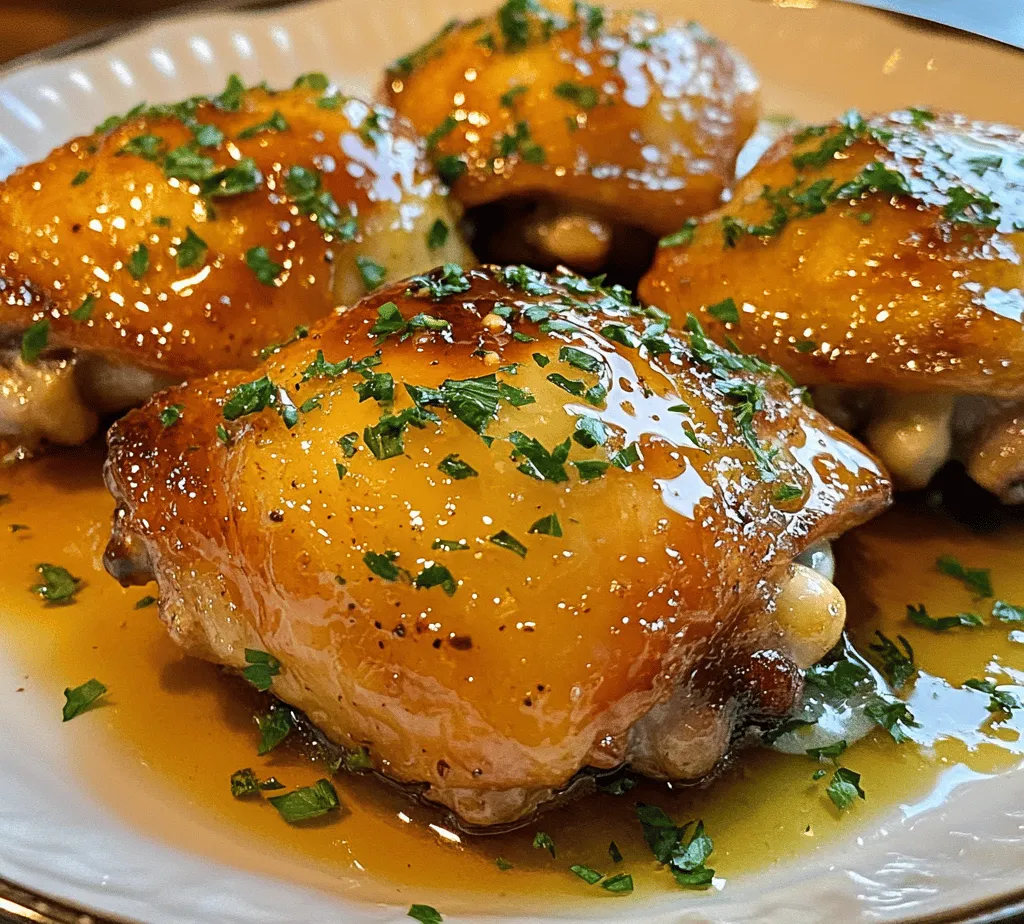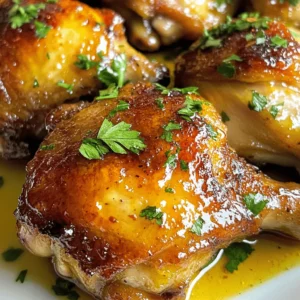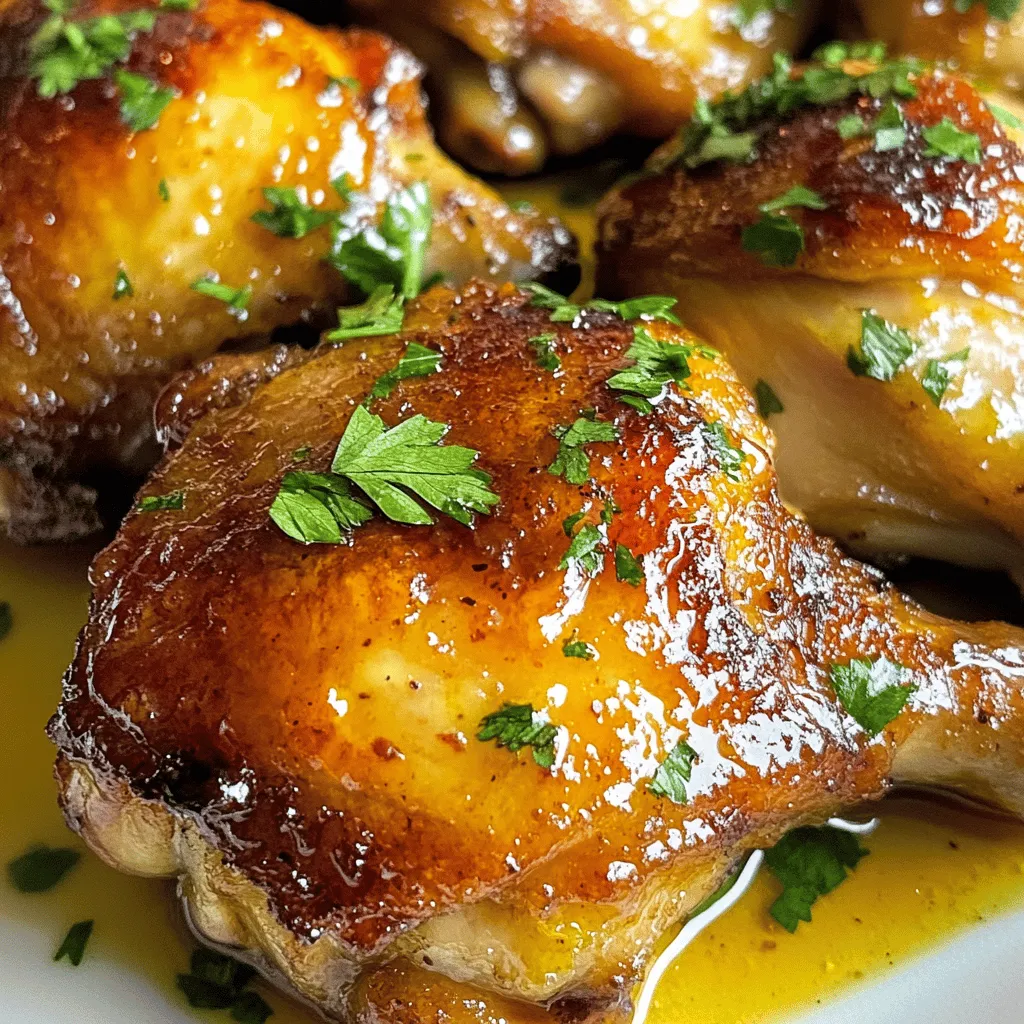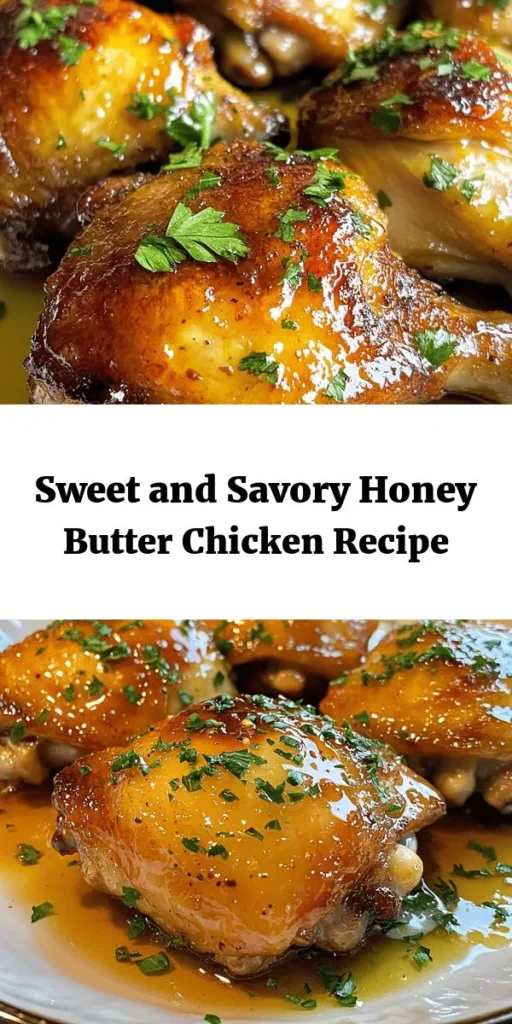Introduction
Honey Butter Chicken has taken the culinary world by storm, emerging as a beloved comfort food that perfectly marries savory and sweet flavors. This dish has gained immense popularity in homes and restaurants alike, thanks to its crispy exterior, succulent chicken, and a luscious sweet glaze. It captures the essence of home-cooked goodness, making it a favorite for family dinners and gatherings. If you’re seeking a dish that will satisfy your cravings and impress your guests, look no further than Honey Butter Chicken.
What makes this dish so appealing is its unique flavor profile. The savory, seasoned chicken is complemented by a rich honey butter sauce that adds a delightful sweetness, creating a balance that is hard to resist. This harmony of flavors, combined with the satisfying crunch of the chicken coating, makes Honey Butter Chicken an irresistible choice for any meal.
In this article, we will provide a comprehensive guide to making Honey Butter Chicken at home, from understanding the dish’s origins to preparing each ingredient and executing the cooking process flawlessly. Whether you are an experienced cook or a beginner, this recipe will walk you through every step you need to create this mouthwatering dish.
Understanding Honey Butter Chicken
Origin and Cultural Significance
Honey Butter Chicken has roots deeply embedded in Southern American cuisine, where fried chicken is a staple. The dish draws inspiration from classic fried chicken recipes but elevates the experience with a sweet and buttery glaze. It represents the merging of flavors that is characteristic of comfort food, reflecting the tradition of combining savory and sweet elements in Southern cooking.
The dish has gained particular acclaim in recent years for its ability to evoke feelings of nostalgia and warmth. It is often associated with family gatherings, picnics, and celebrations, making it a cultural icon in American culinary traditions. This popularity has spurred many variations, with different chefs and home cooks putting their unique spins on the recipe.
Comparison with Other Popular Chicken Recipes
When compared to other popular chicken recipes, such as fried chicken or chicken tenders, Honey Butter Chicken stands out due to its unique glaze. While traditional fried chicken focuses primarily on the crispy coating and seasoning, Honey Butter Chicken adds a layer of flavor that is both sweet and savory. This combination not only enhances the taste but also provides a delightful texture that contrasts the crispy coating with the sticky, buttery sauce.
Additionally, Honey Butter Chicken can be considered a more versatile dish. It can be paired with a variety of sides, such as mashed potatoes, coleslaw, or cornbread, and can be served at any occasion. Whether you’re hosting a casual family dinner or a festive gathering, this dish adapts well to various settings.
Nutritional Benefits of the Ingredients Used
Despite its indulgent appeal, Honey Butter Chicken can be made with nutritious ingredients that provide several health benefits. The primary ingredient, boneless, skinless chicken thighs, is rich in protein, which is essential for muscle growth and repair. This cut of chicken is preferred not only for its flavor but also for its juiciness, making it a great choice for frying.
The use of buttermilk in the marinade not only tenderizes the chicken but also adds probiotics, which can promote gut health. Additionally, spices like garlic powder and smoked paprika are known for their antioxidant properties and can enhance the overall health benefits of the dish.
Honey, the star ingredient of the glaze, is a natural sweetener that offers various health benefits, including antibacterial properties and a lower glycemic index compared to refined sugar. When used in moderation, honey can be a healthier alternative to traditional sweeteners.
Ingredients Breakdown
Understanding the ingredients used in Honey Butter Chicken is crucial for achieving the best results. Each component plays a vital role in creating the dish’s signature flavor and texture.
Boneless, Skinless Chicken Thighs
Boneless, skinless chicken thighs are the preferred choice for this recipe due to their rich flavor and tenderness. Unlike chicken breasts, which can dry out during frying, thighs retain moisture and are less likely to become overcooked. The fat content in thighs also contributes to a juicier and more flavorful chicken, making it ideal for frying.
Buttermilk
Buttermilk is a key ingredient in the marination process. Its acidity helps break down the proteins in the chicken, allowing it to absorb flavors and become incredibly tender. The creamy texture of buttermilk also aids in creating a flavorful coating when combined with flour and spices. If you don’t have buttermilk on hand, you can easily make a substitute by mixing milk with a bit of vinegar or lemon juice.
All-Purpose Flour
All-purpose flour serves as the base for the chicken’s coating, providing that essential crunch we all crave. The flour forms a barrier on the chicken, locking in moisture and flavor during the frying process. For an extra crispy texture, consider mixing cornstarch with the flour, which can enhance the crunchiness of the coating.
Spices
The addition of spices such as garlic powder, onion powder, and smoked paprika elevates the flavor profile of Honey Butter Chicken. Garlic powder offers a robust flavor, while onion powder adds sweetness and depth. Smoked paprika contributes a subtle smokiness that complements the sweetness of the honey, creating a well-rounded taste. These spices not only add complexity but also bring potential health benefits, such as anti-inflammatory properties.
Honey
Honey is the star of the dish, providing the signature sweetness that balances the savory elements of the chicken. It acts not only as a sweetener but also as a glaze that caramelizes when cooked, resulting in a beautiful golden hue. The natural sweetness of honey enhances the overall flavor without overpowering the dish, making it a crucial ingredient in achieving that perfect balance.
Unsalted Butter and Apple Cider Vinegar
Unsalted butter is used in the honey glaze to add richness and a velvety texture. It also helps the honey adhere to the chicken, creating a deliciously sticky coating. Apple cider vinegar, on the other hand, enhances the flavor of the glaze while adding a touch of acidity that brightens the overall taste. This combination of ingredients ensures that the Honey Butter Chicken is both flavorful and indulgent.
Importance of Using Fresh Ingredients
Using fresh ingredients is vital for achieving the best possible flavor in Honey Butter Chicken. Fresh chicken, spices, and honey will contribute to a more vibrant dish, enhancing the overall taste and aroma. Whenever possible, opt for high-quality ingredients, as they can make a significant difference in the final outcome. Fresh herbs or spices can elevate the dish even further, ensuring that your Honey Butter Chicken stands out.
Marinating the Chicken
Marinating the chicken is a crucial step in the Honey Butter Chicken recipe that should not be overlooked. This process allows the flavors to penetrate the meat, resulting in a tender and flavorful dish.
Step-by-Step Guide to Marinating
1. Prepare the Marinade: In a bowl, combine buttermilk, garlic powder, onion powder, smoked paprika, salt, and pepper. Whisk until well combined.
2. Add the Chicken: Place the boneless, skinless chicken thighs into the marinade, ensuring that each piece is fully submerged. This will allow the flavors to infuse throughout the chicken.
3. Cover and Refrigerate: Cover the bowl with plastic wrap or transfer the marinade and chicken into a resealable plastic bag. Refrigerate for at least one hour, but for best results, marinate overnight. This extended marination time will enhance the flavor and tenderness of the chicken.
Importance of Marinating Time
The duration of marination significantly affects the flavor and texture of the chicken. A minimum of one hour allows enough time for the buttermilk to tenderize the meat, while marinating overnight will yield even better results. The longer the chicken marinates, the more flavorful and juicy it will become.
Tips for Ensuring Chicken is Fully Submerged
To ensure that all pieces of chicken are adequately marinated, consider the following tips:
– Use a Shallow Container: A shallow dish allows for more contact between the marinade and the chicken, ensuring even coverage.
– Flip Occasionally: If marinating for an extended period, flip the chicken halfway through to ensure all sides absorb the marinade.
– Check for Air Pockets: If using a resealable bag, remove as much air as possible before sealing to prevent any air pockets that might hinder marination.
Explanation of How Marinating Affects Flavor and Texture
Marinating is essential not only for flavor enhancement but also for improving the texture of the chicken. The acidic nature of buttermilk helps to break down tough muscle fibers, resulting in a tender and juicy piece of chicken. Additionally, the spices in the marinade infuse the meat with flavor, ensuring that every bite is deliciously seasoned.
In summary, marinating the chicken is a crucial step in making Honey Butter Chicken. It enhances the dish’s overall flavor, making it a standout meal that will delight your taste buds. As we move forward in this recipe guide, we will explore how to prepare the coating and cook the chicken to perfection. Stay tuned for the next steps that will lead you to creating your own irresistible Honey Butter Chicken!

Crafting the Perfect Dredging Mix
Creating a delicious Honey Butter Chicken starts with an exceptional dredging mix. The flour coating is essential for achieving that golden, crispy exterior that contrasts beautifully with the juicy chicken inside.
Importance of Seasoning the Flour
Seasoning the flour is a crucial step that elevates the flavor of the chicken. A simple flour mixture may not impart enough taste, so we need to add a few key ingredients. Begin with a base of all-purpose flour and consider adding:
– Salt: Enhances the chicken’s natural flavor.
– Black Pepper: Adds a subtle heat.
– Garlic Powder: Introduces a savory depth.
– Onion Powder: Complements the garlic’s flavor.
– Paprika: For a touch of smokiness and color.
Mix these ingredients thoroughly in a large bowl to ensure that every piece of chicken gets a well-seasoned coating. The right seasoning not only flavors the chicken but also contributes to the overall taste of the dish once combined with the honey butter sauce.
Tips for Achieving an Even Coating on the Chicken
To achieve an even coating on your chicken thighs, follow these tips:
1. Pat the Chicken Dry: Use paper towels to remove moisture from the chicken. This helps the dredging mix adhere better.
2. Use a Shallow Dish: For dredging, use a shallow dish to make it easier to coat the chicken evenly.
3. Dredge in Batches: Don’t overcrowd the dish when adding chicken; work in small batches to ensure even coating.
4. Press Firmly: When coating the chicken, press it into the flour mixture to ensure an even layer sticks to the surface.
Frying the Chicken
Frying is an integral part of this recipe, as it creates the crispy outer layer that pairs perfectly with the honey butter sauce.
Best Practices for Frying Chicken Thighs
When frying chicken thighs, it’s essential to maintain the right technique to achieve that coveted crispy texture. Here are some best practices:
– Use Bone-In, Skin-On Thighs: These pieces retain moisture during cooking, resulting in tender and juicy chicken.
– Fry at the Right Temperature: The oil should be hot enough (around 350°F or 175°C) to crisp the coating without burning it. A thermometer can help ensure accuracy.
Choosing the Right Oil and Maintaining the Proper Temperature
Selecting the right oil is critical for frying chicken. Oils with high smoke points, such as vegetable oil, canola oil, or peanut oil, are ideal choices. They can withstand high temperatures without breaking down.
To maintain proper temperature during cooking:
– Use a Deep Skillet or Dutch Oven: This allows for even heating and provides enough space for frying.
– Monitor the Temperature: If using a thermometer, adjust the heat accordingly to keep the oil at the right temperature.
– Fry in Batches: If you have a lot of chicken to fry, do it in batches to avoid lowering the oil temperature.
Importance of Not Overcrowding the Skillet
Overcrowding the skillet can significantly reduce the oil temperature, leading to greasy chicken that lacks crispiness. Always ensure there’s enough space between each piece of chicken to allow hot air to circulate freely. This will help achieve that beautiful golden brown color and perfect texture.
Indicators of Perfectly Cooked Chicken
When frying chicken, look for a few key indicators to ensure it’s cooked perfectly:
– Golden Brown Color: The chicken should have a rich, golden-brown exterior.
– Internal Temperature: Use a meat thermometer to check that the internal temperature has reached 165°F (74°C). This ensures that the chicken is cooked through and safe to eat.
Making the Honey Butter Sauce
While the chicken is frying, it’s time to prepare the luscious honey butter sauce that will elevate this dish.
Ingredients Needed for the Sauce
To make the honey butter sauce, you’ll need:
– Unsalted Butter: Adds richness to the sauce.
– Honey: The star of the sauce, providing sweetness and flavor.
– Apple Cider Vinegar: Balances the sweetness and adds a tangy note.
– Salt: Enhances the overall flavor of the sauce.
Detailed Instructions on How to Prepare the Sauce in the Skillet
Once your chicken is fried and resting on paper towels to drain excess oil, you can begin making the sauce:
1. Reduce Heat: In the same skillet used for frying, lower the heat to medium.
2. Melt the Butter: Add the unsalted butter to the skillet and let it melt completely.
3. Add Honey: Pour in the honey, stirring to combine with the melted butter.
4. Incorporate Apple Cider Vinegar: Add the apple cider vinegar gradually while stirring. This will cut through the richness of the butter and add a delightful tang.
5. Season with Salt: Finally, sprinkle in a pinch of salt to enhance the sauce’s flavors.
The Role of Butter in Creating a Rich Glaze
Butter is a key ingredient in this sauce, creating a smooth, rich glaze that coats the chicken beautifully. It not only adds flavor but also contributes to the glossy finish that makes the dish visually appealing.
How Apple Cider Vinegar Balances the Sweetness of Honey
Apple cider vinegar is essential for balancing the sweetness of the honey. It introduces acidity, which helps to cut through the richness of the butter and provides a well-rounded flavor profile. This balance is what makes the sauce irresistible.
Tips for Achieving the Right Consistency
To achieve the perfect consistency for your honey butter sauce:
– Cook on Low Heat: Avoid high heat, which can cause the sauce to become too runny.
– Simmer Gently: Allow the sauce to simmer for a few minutes until it thickens slightly.
– Adjust According to Preference: If you prefer a thicker sauce, let it simmer longer. If it’s too thick, you can add a bit of water to reach your desired consistency.
Glazing the Chicken
Once the honey butter sauce is ready, it’s time to glaze the fried chicken.
Techniques for Evenly Coating the Fried Chicken in the Sauce
To ensure that each piece of chicken is evenly coated:
1. Use Tongs: Carefully place the fried chicken in the skillet with the honey butter sauce.
2. Spoon Sauce Over Chicken: Use a spoon to pour the sauce over each piece, ensuring that all sides are covered.
3. Let it Sit: Allow the chicken to sit in the sauce for a minute or two, letting it absorb the flavors.
The Visual Appeal of the Glazed Chicken and Garnishing
The glossy finish of the honey butter sauce creates a visually stunning dish. To enhance the presentation:
– Garnish with Fresh Herbs: Sprinkle chopped fresh parsley or thyme over the glazed chicken for a pop of color and freshness.
– Serve on a Beautiful Platter: Arrange the chicken on a white or contrasting platter to highlight the golden color of the glaze.
Serving Suggestions
Now that your Honey Butter Chicken is beautifully glazed and garnished, it’s time to serve!
Presentation Ideas for a Beautiful Plate
To create an appealing plate, consider the following presentation tips:
– Layering: Serve the chicken on a bed of mashed potatoes or rice to add volume.
– Use Colorful Sides: Bright vegetables or a colorful salad can enhance the overall aesthetic.
– Drizzle Extra Sauce: If there’s leftover honey butter sauce, drizzle it around the plate for an elegant touch.
Complementary Sides That Pair Well with Honey Butter Chicken
Honey Butter Chicken pairs well with a variety of side dishes, including:
– Creamy Mashed Potatoes: The buttery flavor complements the chicken perfectly.
– Roasted Vegetables: Carrots, broccoli, or Brussels sprouts add color and nutrients to the meal.
– Coleslaw: A crunchy slaw provides a refreshing contrast to the rich chicken.
Ideas for Garnishing: Using Fresh Parsley and Other Herbs
Fresh herbs not only add flavor but also enhance the presentation. Try garnishing your Honey Butter Chicken with:
– Chopped Fresh Parsley: Adds a bright green color and freshness.
– Thyme or Rosemary: These herbs can also complement the flavors in the sauce.
Conclusion
In summary, this Honey Butter Chicken recipe is a delightful combination of crispy fried chicken, coated in a rich, sweet, and tangy honey butter sauce. The meticulous preparation—from crafting the perfect dredging mix to frying the chicken and glazing it with sauce—ensures an unforgettable dish.
We encourage you to try making this Honey Butter Chicken at home. The process of creating a delicious meal from scratch brings joy not only to the cook but also to those who gather around the table to enjoy it. Sharing homemade meals with family and friends is one of life’s simple pleasures, and this dish is sure to impress. So roll up your sleeves, gather your ingredients, and dive into the bliss of cooking!



